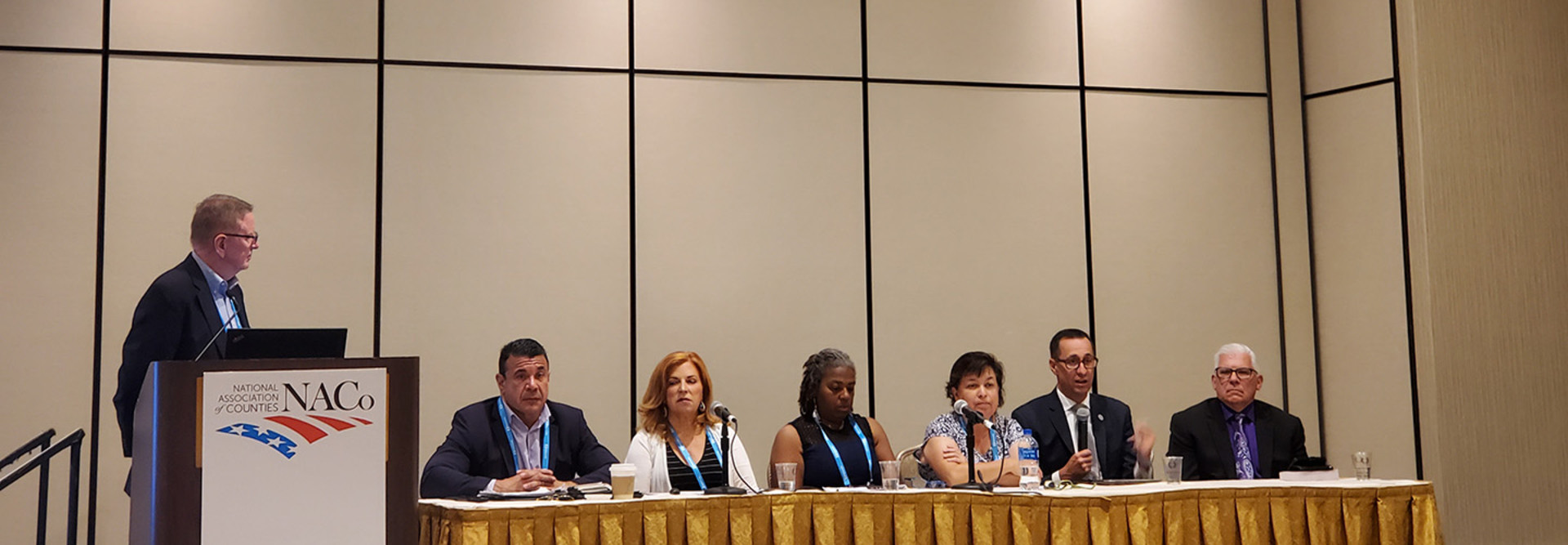NACo 2019: Data Integration Can Improve County Social Services
County governments administer a wide range of social services, from criminal justice and probation to child welfare, behavioral and mental health, and more. Often, residents interact with several of these services, but the data from each is siloed. County governments are starting to change that in an effort to improve service delivery and provide services more holistically and humanely.
Speaking during a panel at the National Association of Counties 84th Annual Conference and Exposition in Las Vegas, officials from three counties explained their approach to bringing this data together in one source and discussed why such integration is so crucial to improving service delivery.
JOIN THE CONVERSATION: Follow @StateTech on Twitter for continued NACo 2019 coverage.
Nick Macchione, director of the Health and Human Services Agency for San Diego County, noted that 1.1 million of the county’s 3.4 million residents interact with his agency, which was created in 1977 to provide a panoply of social services. It is unrealistic to expect line workers like nurses or social workers to fully grasp all of the services the agency provides, he said.
“We knew then we needed a digital backbone,” Macchione said. The goal, he said, was “to have information more readily available so that information can empower” social service workers to deliver better benefits to residents.
Counties Work to Integrate Data to Enhance Services
San Diego’s holistic vision is encapsulated in an initiative called Live Well San Diego, which was born out of a desire to increase interoperability among social service agencies. “We were one agency with many programs,” Macchione said. “We wanted to become this agency of one.”
To do that, HHSA did not race to get a technology product launched but instead focused on its vision for achieving health equity. The end goal, he said, is to figure out how to “add years of life expectancy and quality of life for all of your residents.”
Barbie Robinson, director of the Department of Health Services of Sonoma County, Calif., noted that in her county, health and human services agencies have shared populations. The goal has been to think holistically about how to get residents out of the social safety net, not just into it.
Karen Fies, director of Sonoma County Human Services, said that as a former social worker, she knows that residents have multiple case plans that they need to manage. Many of those are run on software programs mandated by the state.
“We will never get rid of state-mandated software programs and systems.” Fies said. “But what we can do and what we have done is create something outside that system” that allows agencies to share residents’ information with their permission.
Four years ago, Washoe County, Nev., was still using paper files to pass information on residents from department to department, according to Bob Lucey, a supervisor for the county. “We were still very much in the dark ages in terms of data and how we dealt with all of these individuals,” he said. Since then, the county has worked to integrate all of its data digitally.
The counties all use IBM’s Health and Human Services Connect 360 solution to create data hubs, and then have different user interfaces, according to Ken Wolsey, program delivery executive for state and local government at IBM.
Robinson said that Sonoma County’s board of supervisors adopted a resolution to direct safety net departments to develop an integrated data hub, and that they have agreements on data sharing. The county did not approach the program as a pilot but rather as a “transformation” of how the county delivered safety net services via its first interdepartmental multidisciplinary team.
She said that frontline social service staffers are the one who have become the biggest evangelizers of the program, not higher-level managers. “They better understand more holistically what the needs are of the people they are serving,” she said, adding that they have become versed in the nuances of other programs outside their own.
Judge Egan Walker of Nevada’s Second Judicial District Court said the goal of data integration is to get judges and probation officers on the same page and understand “in human terms” what is happening to residents — especially those in the juvenile criminal justice system, so that they do not wind up in the adult criminal justice system.
There are other tangible effects of such programs. Supervisor Shirlee Zane of the Board of Supervisors for Sonoma County, said that the solution can reduce case management time by up to half.
Macchione said that San Diego County is working with IBM to create a customer portal to see their cases, their applications and their appointments.
Follow StateTech magazine's coverage of the NACo 2019 conference at our conference landing page.










